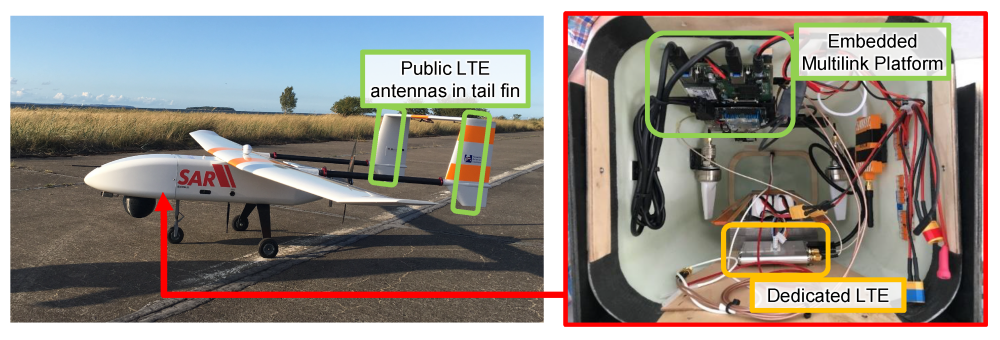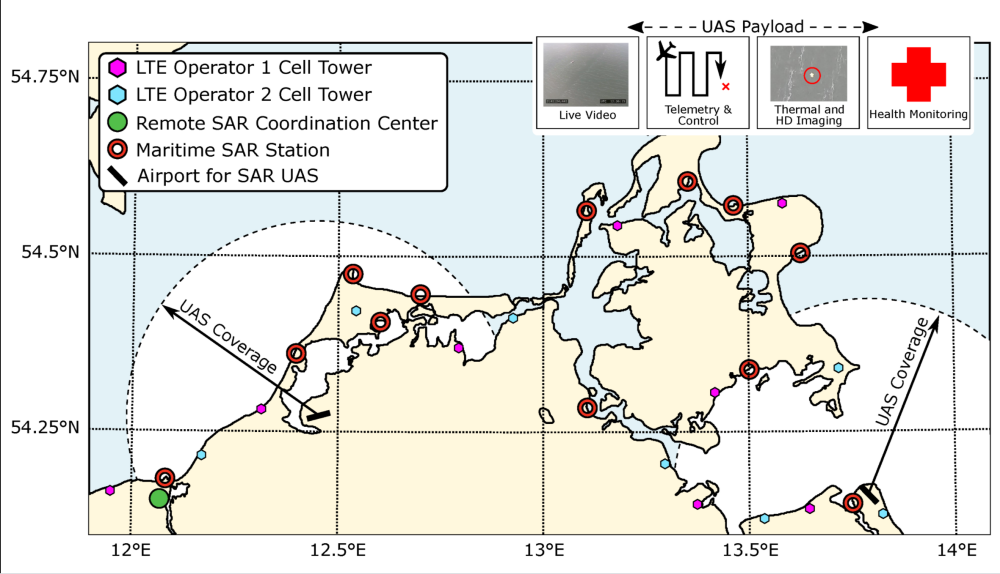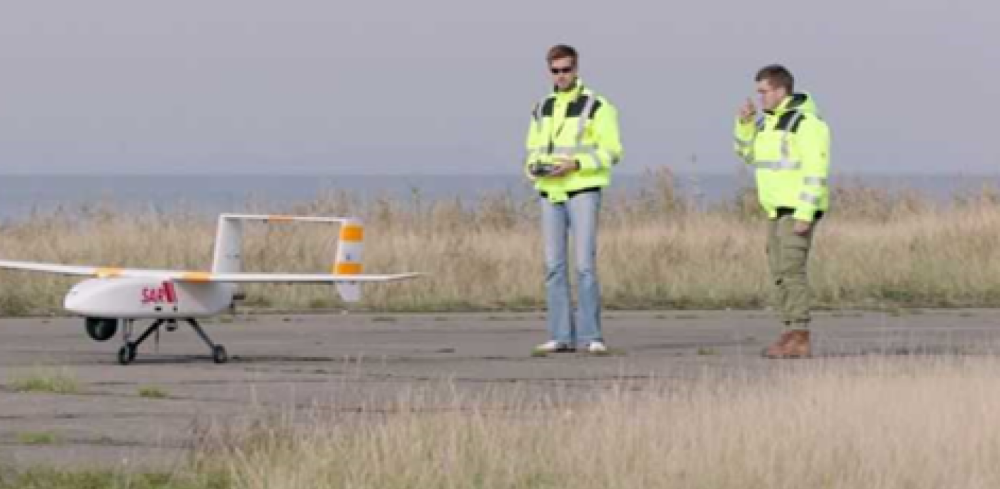Researchers at the TU Dortmund University have just published a 22-page paper which addresses the challenges of UAS usage in maritime SAR scenarios which lie in the remote control as well as the real-time exchange of acquired information like sensor data, videos, and images.
Abstract
With the increasing availability of unmanned aircraft systems, their usage for search and rescue is close at hand. Especially in the maritime context, aerial support can yield significant benefits. This article proposes and evaluates the concept of combining multiple cellular networks for highly reliable communication with those aircraft systems.

Illustration of the LARUS Unmanned Aerial Vehicle (UAV) showing the location of the communication hardware in front and tail fin. The UAV has a fixed wingspan for 3.6 m and a total weight of 26 kg. With its combustion, engine it is able to fly for multiple hours.
The proposed approach is experimentally validated in several unprecedented large-scale experiments in the maritime context. It is found that in this scenario, conventional methods do not suffice for reliable connectivity to the aircraft with significantly varying overall availabilities between 68% and 97%. The underlying work, however, overcomes the limitations of single-link connectivity by providing availability of up to 99.8% in the analyzed scenarios. Therefore, the approach and the experimental data presented in this work yield a solid contribution to search and rescue drones.
All results and flight recording data sets are published along with this article to enable future related work and studies, external reproduction, and validation of the underlying results and findings.
The full paper can be accessed here.
Top Photo: Schematic illustration of the Search and Rescue (SAR) scenario depicting the Unmanned Aircraft System (UAS) deployment at two different locations. The proposed multi-link approach leverages public cellular networks to transport live video, telemetry and control, and additional payload. The two depicted airports were actually used in the experimental validation in the remainder of this article.
All Photos: 2020 LARUS project
Source: MDPI


